“How much do you know about your DNA?” Cutlep asked as he led Skinner through one of the conduits connecting the buildings.
“I know it’s made up of four amino acids and looks like a twisted ladder, and that’s about it,” Skinner said honestly. “Why? What does my DNA have to do with this?”
Cutlep led him through another airlock. The next room over looked as if it had once been some crew quarters. Much of the former furniture had been stripped away to make room for three large tubes of semi-transparent liquid. It bubbled and fizzed as if it was boiling, and Skinner stopped to admire one for a moment. It stretched from ceiling to floor, filled to bursting with its roiling contents, and was connected to several smaller machines around the room.
“Your DNA is made up of so much more than just four amino acids,” Cutlep explained. “The amino acids in your body are effectively a naturally occurring nucleobase analog. In science, we use nucleobase analogs for medicine and biological research because they are structurally similar to the naturally occurring RNA, DNA and CRNA found in sapient species throughout the Galaxy.”
“So fake DNA made in labs, then?” Skinner asked.
Cutlep made a derisive noise. “You’re so naïve,” he spat. “This is why I don’t often work with humans. Your minds fail to grasp even the simplest of concepts unless it’s spelled out for you in crayon. No, it’s not ‘fake DNA’. Nucleobase analogs exist naturally throughout the universe and are extremely varied. Pyrimidine and purine structures are the tip of the iceberg, but once you start calculating for the immense possible combinations of compounds the number explodes!”
“Okay, okay,” Skinner said, holding up his hands as the Erythian continued to storm around the room, waving his arms in agitation. “I get it. Sorry. I’m a salvage runner, not a scientist.”
Cutlep snorted again. “At least you possess the humility to admit it,” he said. “In any case, your DNA contains adenine, cytosine, guanine and thymine… and your RNA contains uracil, but that’s besides the point. Different species from entirely different worlds have a wholly separate structure from that. Although they may share some of the base pairs – you and I share adenine-thymine for instance – I possess two amino acids that you don’t.”
“Which is why we’re not just different species, but a whole different planet’s worth of different,” Skinner said. “I think I’m following.”
“Now, imagine what would happen if you could collect an absolutely enormous volume of nucleobase analogues in one place,” Cutlep said as he keyed in some commands on one of the various machines. “Not just from your species, but from many.” He turned around and gestured to the first vat. “This tube contains a protoplasmic solution formed from the nucleobase analogs of seven different species. However, the concentration is extremely limited. Much of what is in this tube is a compound designed to suspend the analogs.”
“Oooooookay,” Skinner said, scratching the side of his helmet as he looked into the tube. It still looked like very thick, goopy water to him. “And what does this achieve?”
“On its own, nothing,” Cutlep admitted. “But that’s what I’m trying to figure out.” He walked over to a large digital calendar on the wall. Skinner owned a similar one, but his didn’t go back as far. While the one in his cabin went back a cycle, this one went back thirty. He followed Cutlep over to it, watching as the Erythian began to highlight dates.
“Here… eighteen cycles ago, we were doing some excavating in the Eledine Basin. Seismic scans had picked up the presence of several anomalous objects buried deep beneath the surface. We managed to unearth several small objects. I have one of them in the next pod over. They were very smooth, elliptical objects that were definitely not natural. Bone white, not a seam anywhere on them… but they had distinct legs that would imply they were supposed to move like an insect or crustacean. There was also a small yellow lens on one side.”
“Any idea what they were?” Skinner asked, curious.
“Still no,” Cutlep said. “But they were giving off the same energy as that artifact you brought me – the Type-II radiation. I found it odd – offered to bring one back to my lab for study. Unfortunately, Dynamico Limited didn’t want that. They wanted us to monetize the find and sell it for tourism to attract more colonists to the site. That was a mistake.”
He sighed, highlighting another date almost a year later. “It worked, mind you. Colonists came flooding in to see the first proof of a new sentient species. That’s how we marketed it… it was obviously not made by any known empire. The few tests I did actually showed that it was made of Lawrencium—or some kind of parallel to it. No empire alive today can manipulate Lawrencium; not enough to make solid structures out of it, anyway.”
Another date winked to life on the calendar. “First to go was Epiphany. The colony shot out a very short distress message before going dark. Teams were dispatched to investigate, but couldn’t find anything. Not the colonists, not a cause of disappearance… and not the first artifact which had been held there. I voiced my concerns to Dynamico Limited, but they ignored me. They said I was a paranoid scientist and should leave colonization efforts to the professionals.”
“This sounds like the opening of every horror movie ever,” Skinner said.
Cutlep nodded quickly. “And I have watched my fair share, by the way – you humans can tell an excellent scary story. The science doesn’t always hold up, but some of your concepts… your species must be terrified of everything! Anyway, that’s not the point…” he took a breath and continued, unwilling to look directly at Skinner. “Oracle went dark next. And then Symbolica, which was very close by.”
“Let me guess – the other two artifacts were there too?”
“One was in Oracle,” Cutlep confirmed. “The third and final one was in Ecstasis. I wasn’t going to miss my opportunity, so I made my way there and seized it. I was absolutely convinced that these odd artifacts were the cause of the disappearances… and I was absolutely correct.”
A series of dates over the next few cycles lit up. “The colonies had been convenient at first because these artifacts had activated inside them. They had harvested the occupants, and—”
“The heck do you mean “harvested”?” Skinner asked, horrified. “Like… you mean like a crop?!”
Cutlep nodded. “The artifacts have the ability of breaking down organic matter into their constituent nucleobase analogs,” he said. “It is why I am studying these analogs now. I am trying to figure out what they want. What their end goal is… and why.” He shook his head quickly. “The third artifact did activate, but I had already contained it safely. I monitored it very closely, but could not learn anything I did not already know. It was maddening!”
A single date lit up on the calendar. “And then the ‘ghosts’ appeared that you spoke of… and I use that term derisively. I don’t know what else to call them. A small team of specialists tracked one of the artifacts across the Thoilia plateau. They managed to corner it and opened fire, damaging it severely. In response, the artifact sent out what we can only assume was a distress beacon.”
“Oh no,” Skinner said. “Don’t tell me someone answered…”
“Not someone,” Cutlep corrected. “Something. And something horrifying, I might add. There was another type of artifact – one we did not find. It was much larger and did not scuttle like a crustacean. It walked like a mountain; one thunderous step at a time. And it brought with it the ghosts I mentioned earlier.”
“Please don’t tell me ghosts are real,” Skinner begged. “I’m not going to be able to take it.”
Cutlep walked back to one of the other pods. “They are not ‘ghosts’ in the sense of your movies or media,” Cutlep said. “They are physical. They can die. They can be contained and studied. But I do not know what else to call them.” He flushed the tank without another word. Skinner instinctively recoiled in horror, bumping into tables and chairs as he did.
Inside the glass tube was what looked like a human. It stood upright on two legs, each ending in a foot with five toes. Likewise, it had two arms with five fingers and opposable thumbs. This particular specimen was female – Skinner could see the swell of the breasts even from across the room. That, however, was where the similarities ended. While it possessed breasts, it lacked nipples of any kind. Likewise, it didn’t seem to have genitals. It was built more like a child’s doll than an actual living thing. The skin was pale, paper-white and looked considerably harder than his. But what really sent shivers down his spine was the face. It lacked hair to frame it, and the ears seemed almost too small for the size of the head. But where the face should have been there was just… nothing. Just a smooth surface of skin. No contours, no bulges for a nose or mouth. Absolutely nothing.
“Oh my god…” Skinner breathed, feeling his stomach lurch. “What… what is that?”
“A human,” Cutlep said as he walked over to the tank. The creature inside stood up from its crouched position as he approached, the fingers flexing and curling. “Or at least, that’s what its DNA says. In fact, it possesses one-hundred percent pure human DNA at absolute baseline. No variance whatsoever. If you were to blend the entire human race down into a genetic soup and birth the perfect average, this is what you would get.”
“But… no. No, that’s not possible. Absolutely not. It has no face! No… anything! It’s a rubber doll!”
“A rubber doll capable of killing you,” Cutlep said. “This is what I have been calling a ghost. Whether you accept it or not, the readings are absolute. This is undeniably human… but obviously it is not the human you know or are. This may read as human, but it was created on the spot by the gigantic anomaly to defend the smaller ones. It actually created several.”
The creature in the tank began to throw itself against the glass. Skinner jumped back, unslinging his rifle and aiming it at the tank. Cutlep, however, didn’t react at all. “Relax. The glass is enough to hold it. I have been studying this particular specimen for the past ten cycles. I have come to a theoretical conclusion.”
“And that is?” Skinner asked, not taking the rifle off the thing in the tank for a second.
Cutlep began to pace, gesturing with his tiny hands as he did. “My theory is that the artifacts we discovered are some kind of remote harvesting unit. For what or why, I do not know yet. Their end goal seems to be to collect as many nucleobase analogs as possible. I do not know how or why, so do not ask. They then somehow transmit this to the larger artifact, which can recompile and reconstruct – or possibly even combine – these analogs to create these creatures.”
“Oh god… that’s… horrifying,” Skinner breathed, his finger on the trigger. He couldn’t move it away.
“While I came to this conclusion, and during the time I have studied this specimen, several more were created,” Cutlep told him. “In tandem with the artifacts, they spent several cycles strip mining this planet of every available organic source. They apparently only have an interest in living tissue – they did not even stop to investigate fallen trees, but stripped the fungi off them. Fossils hold no interest for these objects either, and nor do graveyards or cemeteries.”
The Erythian scientist walked over to one of the windows that looked out into the crater. “To my knowledge, the last unmolested organic tissue is within this crater. Everything else has been harvested. The artifacts are still out there, but after exhausting the remainder of the organic tissue on this planet, they have begun to behave erratically. They are directionless and dangerous. They drift across the planet in search of… something.”
He turned back to Skinner. “I am convinced the artifact you brought me has some connection to these anomalies,” he said. “I just need to figure it out… and you may have unknowingly brought me the final piece to my puzzle. Will you assist me for a moment?”
“I’m not climbing in that tank, if that’s what you’re asking,” Skinner said abruptly.
The Erythian rolled his eyes – a motion that Skinner could barely detect. “Obviously not. I need you to assist me in connecting your artifact to a few of my machines so I may run some tests.”
“What I’m hearing,” Skinner said, unable to keep the disappointment from his voice, “is that it’s not valuable and I can’t sell it?”
Cutlep shook his head. “No. If you tried, it would likely result in you being arrested for the possession of an unknown artifact. You also would likely not get very much for it, as there is no stable way to ascertain its value. Nonono, not at all. Its value is purely scientific.”
“I hate my life,” Skinner said as Cutlep flooded the tank with the pale, bone-white ‘human’ in it again. He could breathe a little easier now that he couldn’t see it. “Okay, okay… I’m here, might as well help. What do you need?”
“Excellent!” Cutlep said, clasping his hands and jumping into the air like a child on Christmas morning. “The first order of business will be to retrieve the artifact from the first chamber. You go get it while I set up the machinery. Bring it to me in the fourth chamber – just keep following the conduits. I will leave the doors open for you.”
“For someone who says he’s watched horror movies, I can’t help but think that’s a terrible idea,” Skinner said. “Is there an access code for the doors?”
Cutlep nodded. “Yes! Of course, a much better plan. Apologies – I got overly excited. The code is two-two-four-seven-five for all of the doors except the last one. When you arrive, let me know and I will open that one. The keypad is on the inside for security purposes… a modification I made before I knew how well my containment unit would work on that creature.”
“And a good idea, too,” Skinner said. “Alright, I’ll go get the doohickey for you. I’ll see you in the fourth chamber.”

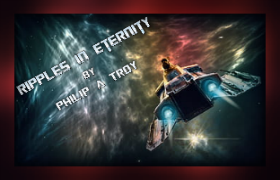
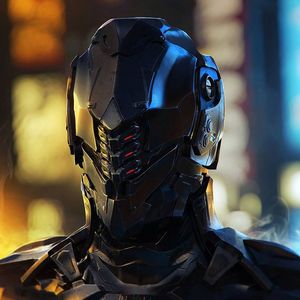




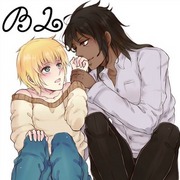


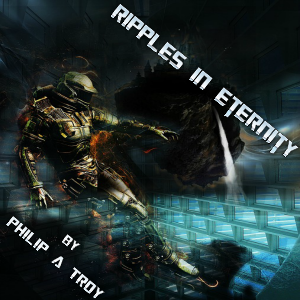
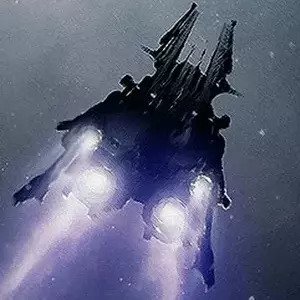
Comments (4)
See all